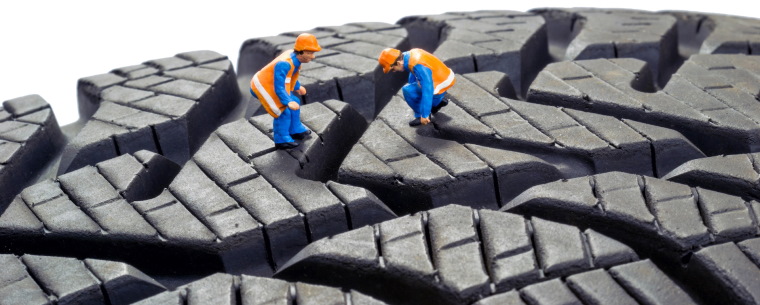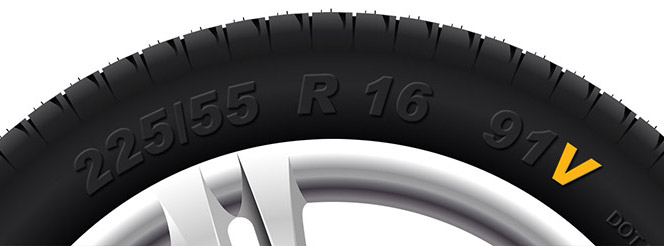Why is Tyre Tread Depth Important?
Published on: Tuesday, 23 November 2021 | Author: Jack Dreyer
In 2020, 69% of drivers questioned didn’t know that there was a legal minimum tyre tread depth in the UK.
This shocking statistic speaks volumes for the lack of awareness about the importance of tyre tread among UK drivers — a fact which is not only embarrassing, but extremely dangerous.
Most drivers probably ignore their tyre tread, and definitely don’t check it regularly. But this shouldn’t be the case. Tyre tread affects all aspects of vehicle performance and safety, from braking distances to water displacement.
So, in order to rectify the nation’s neglect of their tyre treads, the Tyre Pros team has written this blog to take you through the reasons why tyre tread inspection should be at the top of your list of vehicle priorities.
Read on to find out more.
Tyre Tread Depth
When you buy tyres, they all come with an 8mm tread. Now, that might seem a lot but, when you consider the constant wear and tear that tyres are subjected to in daily use, it makes sense to begin with as thick a tread as possible.
By ‘tread’ we’re referring to the grooves of rubber on your tyres that grip the road’s surface, and actively channel water away from the path of your vehicle when driving.
As the one continuous point of contact between your vehicle and the road’s surface, you’ll want to be able to rely on your tyre tread to maintain a suitable level of friction with the road - so that you can control your car.
Legal Implications
According to UK tyre law, driving with a tyre tread depth below the legal minimum of 1.6mm is enough to land you with a hefty fine.
If you don’t replace your tyres before they wear down to 1.6mm, you not only put yourself at risk, but others too. In fact, even a depth of 3mm is too small to effectively grip the road and brake.
That’s why tyre experts like Tyre Pros and manufacturers like Continental agree that you should replace your tyres long before that hazardous 1.6mm minimum is reached.
As members of the UK’s leading tyre safety charity, Tyre Safe, we’ve seen the research and understand that the deeper the tread, the lower the risk of a road accident due to poor braking or sliding.

MOT failure
Did you know that a tyre tread depth below the legal minimum of 1.6mm is an automatic MOT fail? Yes. It’s that serious.
When considering the dangerous implications of driving on tyres with a poor grip — some of which are potentially fatal — it’s a no-brainer that tread depth is enough to warrant MOT failure.
When also considering the time, money, and effort you put into getting your car MOT’d, surely it makes little sense to let it fail over a matter as trivial as a few millimetres.
Grip
It sounds simple, but the more tread you have on your tyres means having more grip with the road. Deeper, newer tread offers a greater level of friction with the road’s surface, allowing for better handling of your vehicle, especially in wet weather conditions.
Wet Weather
Originally, tyre tread was developed to disperse water away from the pathway of a moving vehicle to allow for greater contact with the tarmac underneath — hence why deeper tyre tread makes for improved performance on wet, slippery roads.
In fact, cars with a tyre tread depth of 1.6mm or less take 2 car lengths (8m) longer than a 3mm tread depth to stop in wet weather — that’s a serious hazard!
Naturally, the greater the quality of your tyre tread — anything from 3mm to the ideal of 8mm — the larger the grooves and the more water displaced, reducing the risk of aquaplaning or skidding.

Braking distances
Similarly, tyres that are not smoothed down with little to no tread will struggle severely with braking effectively. Since the contact with the road is majorly reduced in tyres with tread less than 1.6mm, stopping distances are likely to be much longer than they would otherwise be with a set of new tyres.

Checking your tyre tread depth
To make sure that you’re never at risk of driving below the legal minimum tyre tread depth, you should check your tyres regularly.
20p test
All you have to do is use 20p. Yes, you heard us correctly. Conveniently, the distance from the rim of a 20p to the middle of the numbers at the bottom is the same as the minimum tyre depth. So sticking a 20p in the grooves in between your tread is a surefire way to measure it.

Tread wear indicators
Many new tyres nowadays come with small bar-like raised bumps known as tread wear indicators. These clever contraptions sit in between the grooves of your tyre tread untouched until your tyres reach the minimum depth.
When that happens, they wear down, letting you know it’s time to change your tyres again.
So, time to get those 20p coins out and make sure your tyres are in good condition - keeping you, and road users around you, safe.




